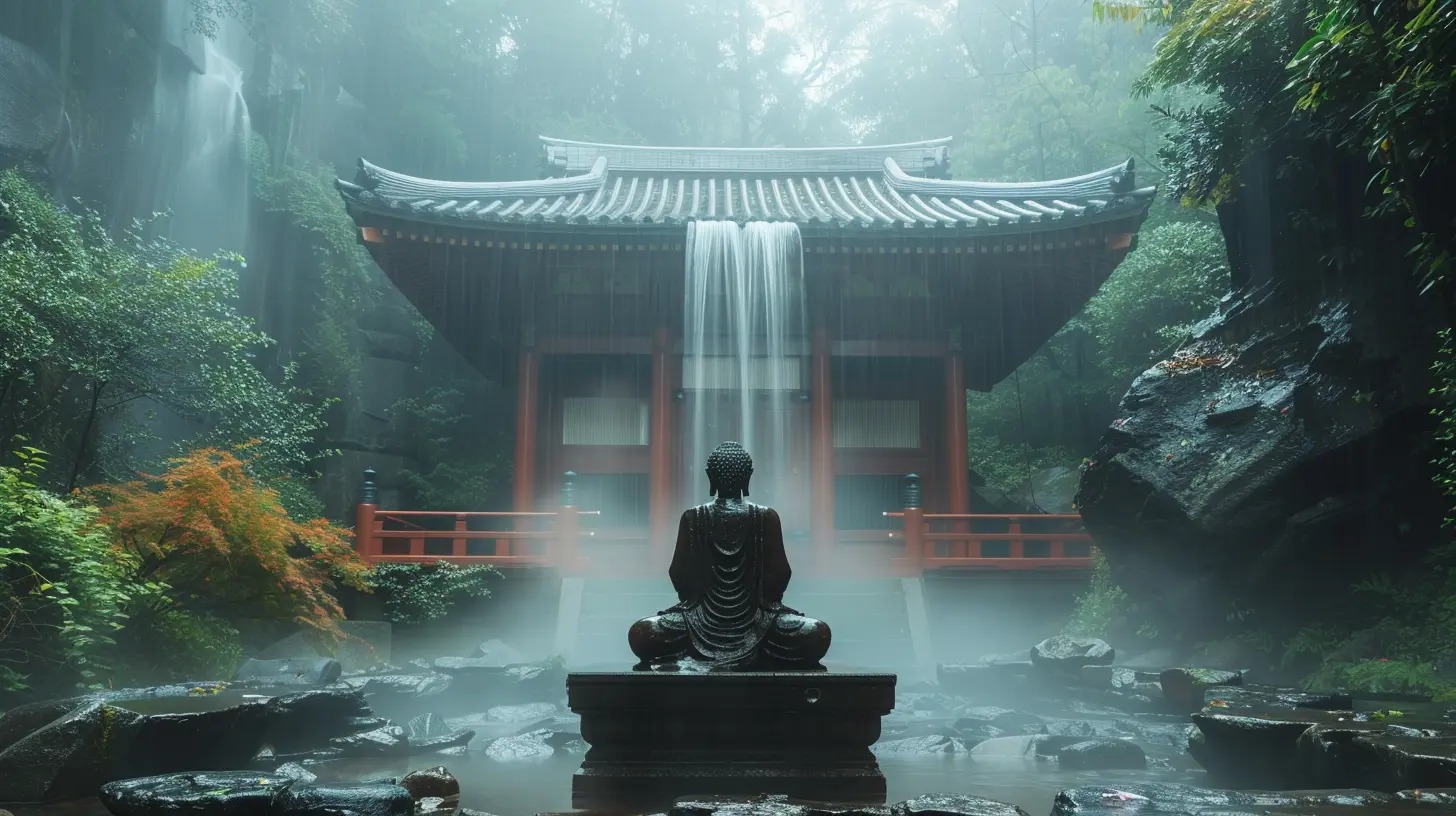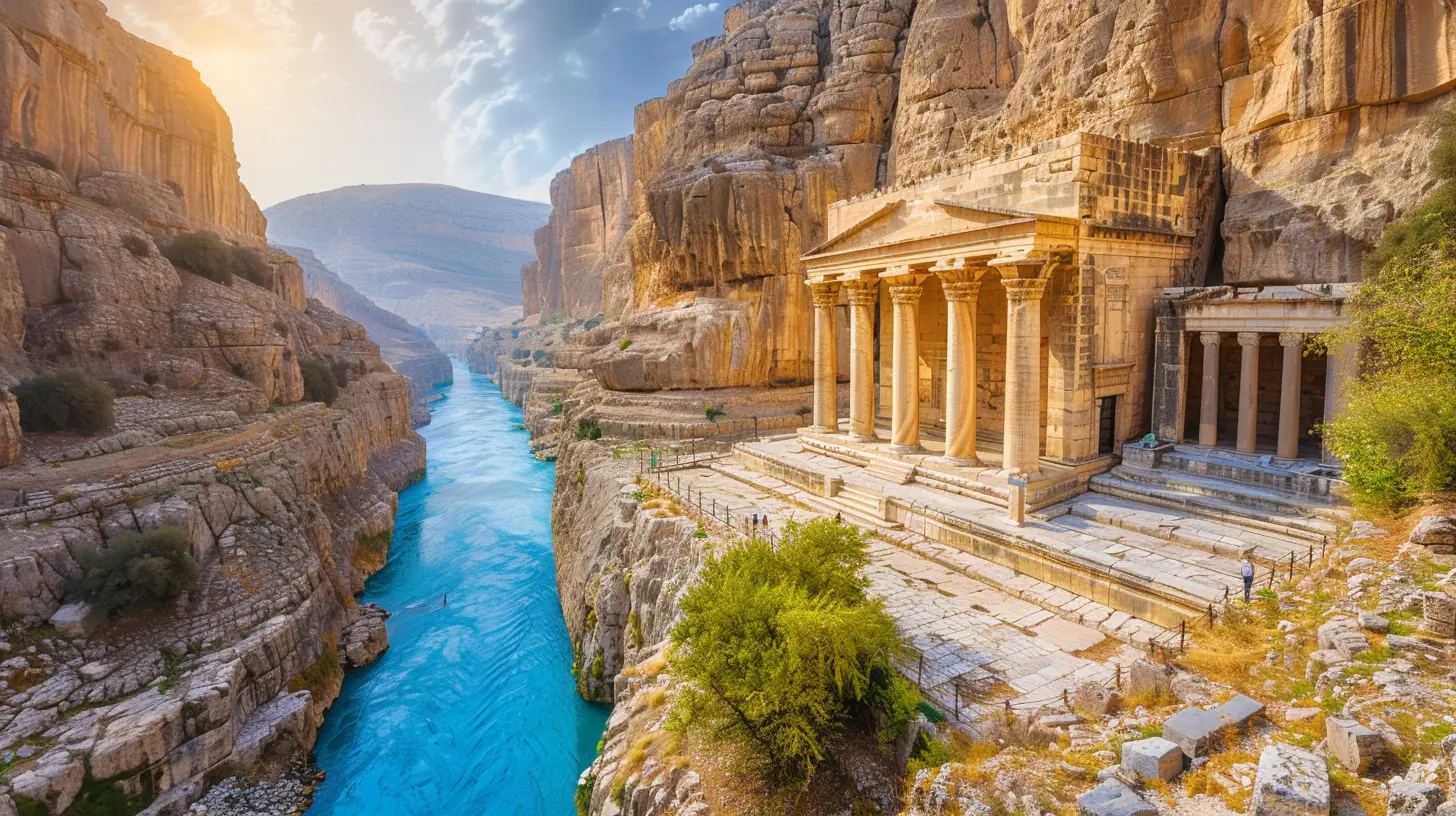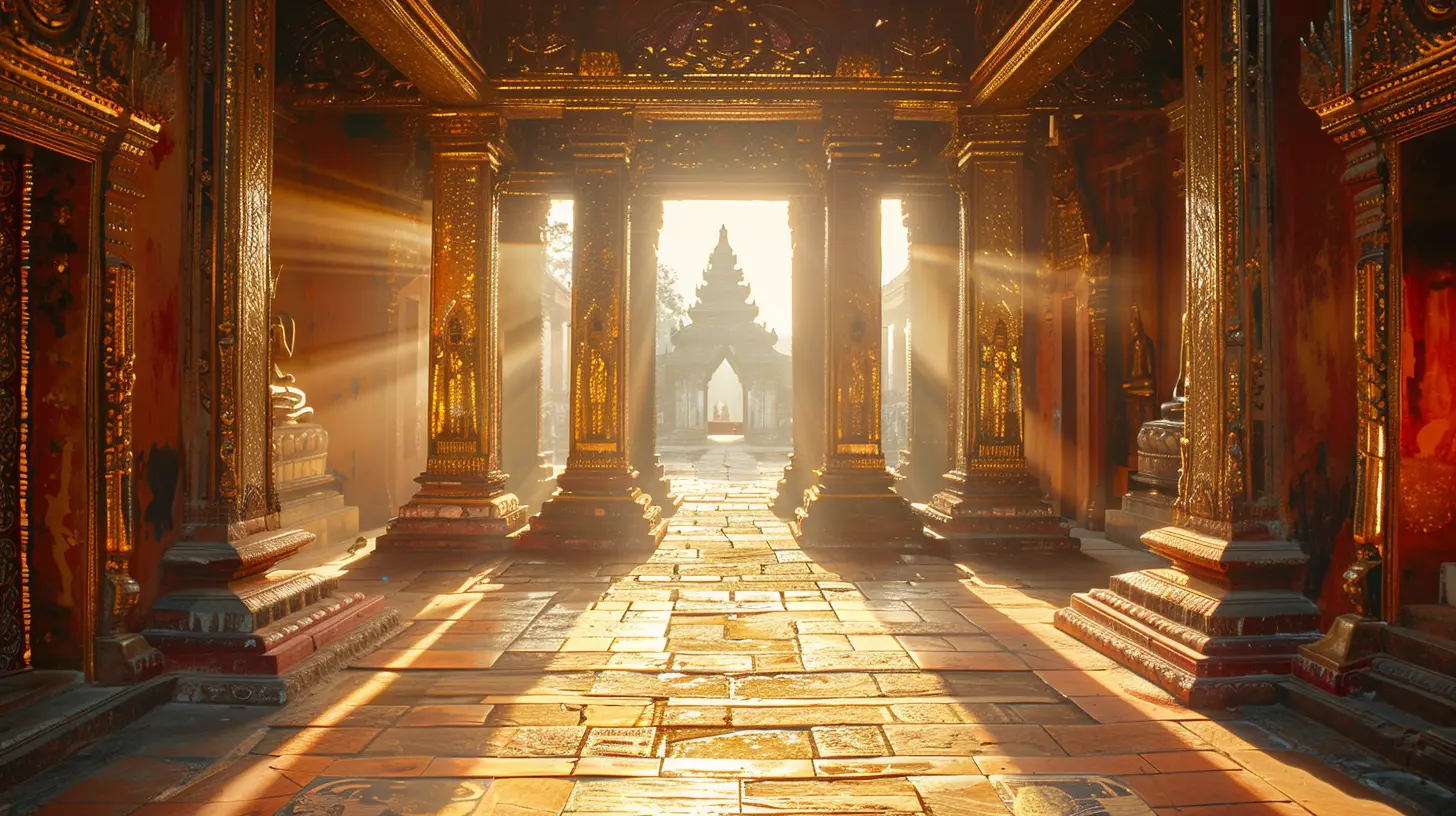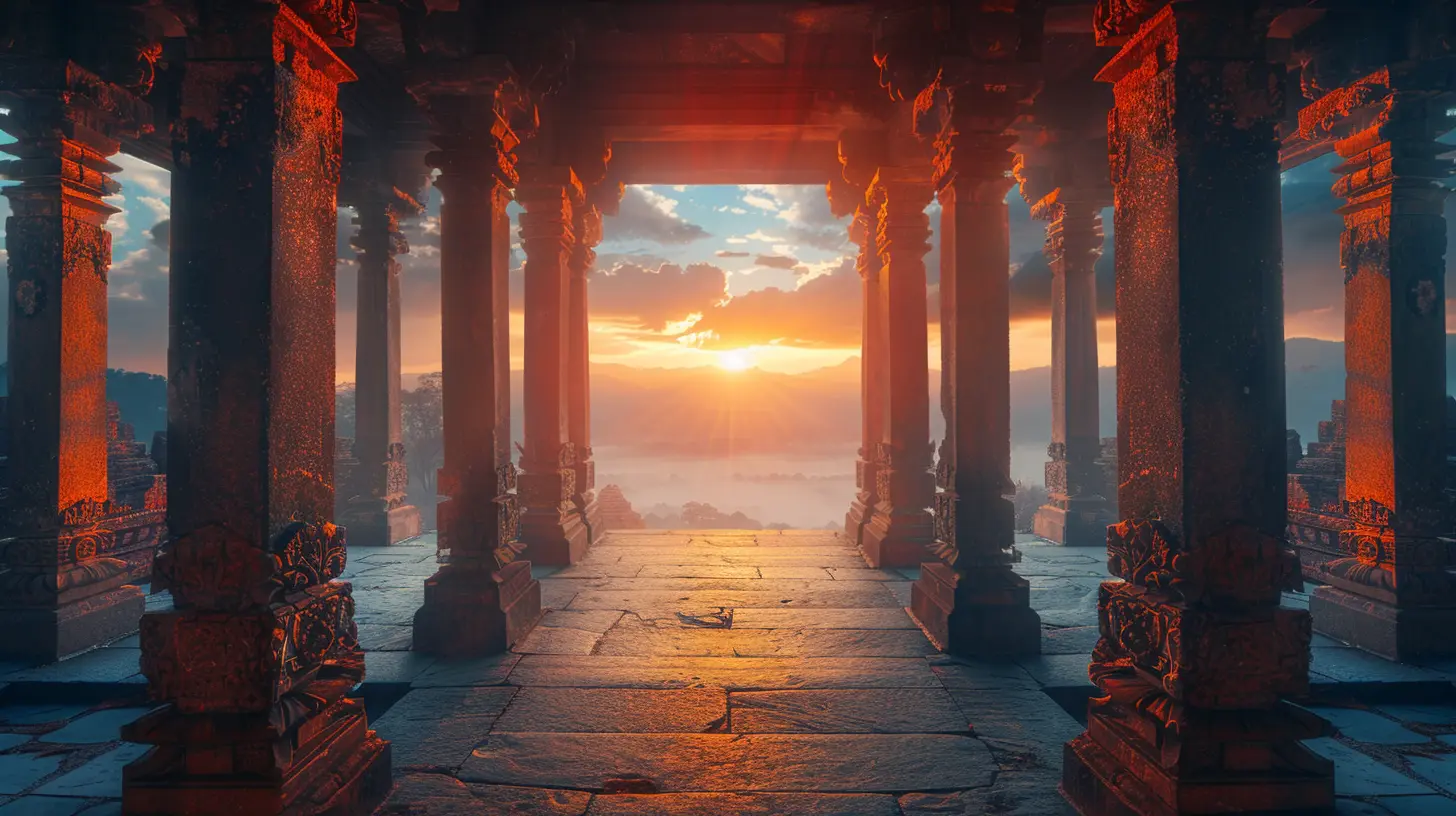Sacred Spaces: UNESCO’s Spiritual and Religious Sites
22 December 2024
When we think of UNESCO World Heritage Sites, visions of grand castles, ancient forts, and unparalleled natural wonders often come to mind. But there's another category of UNESCO sites that touch the soul – sacred spaces. These are the spiritual and religious sites that have been etched into the history books not just by stone and mortar, but by centuries of faith, devotion, and cultural significance. These UNESCO-listed sacred spaces offer more than just a glimpse into the past; they invite us to step into worlds where spirituality, culture, and history come together.

Why Are Sacred Spaces Important?
Religion and spirituality have been at the core of human life for as long as we can remember. Whether through rituals, prayers, or pilgrimages, humans have sought to connect with a higher power. And it’s not just about faith – these practices have shaped cultures, kingdoms, and even the architecture of entire cities.Sacred spaces serve as a cultural compass. They guide us through the intricacies of civilizations, filling in the blanks left by books and oral histories. When a site is recognized by UNESCO for its cultural, historical, and spiritual significance, it stands as a testimony to its universal value.
So, pack your bags (don’t forget your sense of awe), and let’s embark on a journey to explore some of the world’s most fascinating UNESCO-designated spiritual and religious sites.

1. Angkor Wat, Cambodia
A Testament To Khmer Kingship and Faith
Angkor Wat is perhaps the crown jewel of sacred UNESCO sites. This architectural marvel was originally built in the early 12th century as a Hindu temple dedicated to Vishnu, under the reign of King Suryavarman II. However, it gradually transformed into a Buddhist temple by the end of the century.Angkor Wat isn't just about its towering spires and intricate bas-reliefs. This temple embodies the principle of heaven on earth. Its layout reflects Mount Meru, the spiritual center of the universe in Hindu and Buddhist cosmology. Walking through its corridors is like walking through time – each step takes you deeper into the history of a civilization that once thrived in this space.
Fun Fact:
Despite Cambodia being largely a Buddhist nation today, Angkor Wat still retains many of its original Hindu architectural elements, making it a unique fusion of two major world religions.
2. The Vatican City, Italy
The Epicenter of Catholicism
As the heart of the Roman Catholic Church, Vatican City boasts both spiritual significance and unrivaled artistic beauty. From St. Peter's Basilica to the Sistine Chapel, the wealth of religious artistry is enough to take your breath away.But the real magic here is in the rituals that still define daily life. Every step you take in this tiny sovereign state is steeped in millennia of Christian faith and history. The Vatican Museums house priceless works of art that reflect the spiritual journey of mankind, while St. Peter’s Square regularly hosts gatherings of the faithful to receive blessings from the Pope himself.
Interesting Tidbit:
Did you know that Vatican City is the world’s smallest independent state, yet it holds one of the most powerful seats of spiritual influence across the globe? Small, but mighty!
3. Kiyomizu-dera Temple, Japan
A Buddhist Sanctuary in the Heart of Kyoto
Perched on the hills of Kyoto, the Kiyomizu-dera Temple is a breathtaking example of traditional Japanese architecture, blending harmoniously with the surrounding nature. UNESCO recognized this temple as part of the "Historic Monuments of Ancient Kyoto" for its cultural and religious significance in 1994.Its iconic wooden stage offers panoramic views of the city, and it's a pilgrimage destination for those seeking spiritual solace. Derived from the word "pure water" in Japanese, Kiyomizu-dera is closely associated with the Otowa Waterfall, known for its believed healing properties.
A Quick Story:
Legend has it that if you jump off the 13-meter stage of Kiyomizu-dera and survive, your wish will come true. This led to the phrase "to jump off the stage at Kiyomizu" becoming the Japanese equivalent of "taking the plunge."4. Varanasi, India
The Eternal City on the Banks of the Ganges
Varanasi is more than just a city – it’s an embodiment of Hindu spirituality. Known as the spiritual capital of India, Varanasi is situated on the banks of the sacred Ganges River. It's believed that bathing in the Ganges can wash away one’s sins, while cremation here ensures moksha – the ultimate liberation from the cycle of rebirth.The Ghats of Varanasi – a series of steps leading down to the river – are buzzing with life. From early morning prayers to night-time Aarti ceremonies, this is where faith manifests itself with vibrant energy. The entire city feels like a living, breathing prayer.
Did You Know?
Varanasi is considered one of the oldest inhabited cities in the world, dating back more than 3,000 years. It’s a spiritual magnet for Hindus and has long attracted pilgrims from across the globe.
5. Notre-Dame Cathedral, France
A Masterpiece of Gothic Architecture
Paris is often lauded for its art, culture, and romance. But Notre-Dame Cathedral stands tall as both a religious and architectural marvel. Though tragically damaged by a fire in 2019, its significance hasn’t diminished. Dedicated to the Virgin Mary, the cathedral is a symbol of French Gothic architecture, topped by flying buttresses, gargoyles, and ribbed vaults.The stained-glass windows – particularly the Rose windows – are iconic. They tell biblical stories while adding a splash of color to the gray stone structures. Even if you’re not religious, you can’t help but feel something larger than life when you step inside.
An Iconic Moment:
Many don’t know that Notre-Dame was also the site where Napoleon crowned himself Emperor of France in 1804. Talk about historical importance!6. Al-Quds (Jerusalem), Israel-Palestine
A Holy City for Three Religions
Jerusalem is a city where spiritual significance intertwines with complex history. This ancient city is sacred to three major world religions: Judaism, Christianity, and Islam. The Old City is home to the Western Wall (Judaism), the Church of the Holy Sepulchre (Christianity), and the Dome of the Rock (Islam).Walking through the narrow streets of Jerusalem’s Old City feels like walking through an intricate web of faiths, all intersecting yet distinct. The tension, beauty, and overlapping history make it a place of simultaneous reflection and reverence. Sacred to billions of people worldwide, Jerusalem holds a unique place as a meeting point of faith.
A Noteworthy Fact:
The status of Jerusalem remains one of the most contentious issues in global politics, but its religious significance persists undiminished despite centuries of conflict.
7. Borobudur, Indonesia
The Largest Buddhist Monument in the World
Located in Central Java, Borobudur is an awe-inspiring Buddhist temple that dates back to the 9th century. This UNESCO World Heritage site is constructed in the form of a mandala – a spiritual and symbolic representation of the universe in Buddhism. Its terraces are adorned with intricately carved relief panels that depict the story of the Buddha.Borobudur is more than just a temple; it’s a journey. As you move upwards through the levels of the monument, you symbolically progress towards enlightenment. The top of the temple, with its bell-shaped stupas, offers stunning views of the lush green surroundings, making it as much a visual treat as a spiritual one.
Something Unexpected:
Borobudur was abandoned in the 14th century when much of Java converted to Islam, only to be rediscovered centuries later by British rulers in the 19th century.8. Uluru, Australia
A Sacred Landmark of Indigenous Spirituality
At first glance, Uluru – also known as Ayers Rock – might seem like just another massive sandstone rock in the middle of the Australian outback. But for the Anangu people, it’s far more; it’s a sacred space filled with spiritual stories, or "Tjukurpa", that inform their way of life.For tens of thousands of years, the Indigenous people of Australia have revered Uluru as a place of great spiritual importance. Its caves, springs, and ancient rock art make it more than just a geologic wonder. Uluru speaks of a deep relationship between the land and its traditional custodians.
Cultural Note:
Visitors are now discouraged from climbing Uluru out of respect for the sacred traditions of the Anangu people, a significant step forward in preserving the cultural sanctity of this site.The Significance of UNESCO Recognition
UNESCO’s recognition of these sacred spaces does more than preserve their physical structures. It acknowledges their living, breathing significance within local cultures, religions, and histories. These sites aren’t just relics; they are active, thriving places where people continue to seek spiritual solace, connect with the divine, and honor their ancestors.Exploring these UNESCO-designated sacred spaces offers not only an opportunity to learn about history but also a chance to reflect on our shared human quest for meaning. Whether you're religious or not, there is something deeply moving about visiting these spiritual sites around the world.
Conclusion
Sacred spaces have always held a unique place in human history. They stand as a testament to our complex relationship with the divine, serving as both a cultural marker and a spiritual refuge. These places invite us to step out of our everyday lives and into something timeless, something universal.Whether you’re marveling at the architectural beauty of Notre-Dame or finding peace along the banks of the Ganges, these sacred UNESCO sites remind us of our shared humanity.
So, next time you plan that dream vacation, consider adding one of these sacred spaces to your itinerary. You may just find that they offer a different kind of journey – one that’s as much about discovering yourself as it is about exploring the world.
all images in this post were generated using AI tools
Category:
Unesco SitesAuthor:

Ian Powell
Discussion
rate this article
12 comments
Colton Simmons
Explore divine heritage through UNESCO's sacred sites.
February 8, 2025 at 3:29 PM

Ian Powell
Thank you for highlighting the importance of UNESCO's sacred sites! They truly embody the richness of divine heritage and offer profound insights into our spiritual traditions.
Owen Marks
In the whispers of ancient stones and the shadows of sacred trees, these UNESCO sites hold secrets untold. Each footstep echoes a story of devotion and mystery, inviting seekers to explore the unseen connections between the past and the divine.
February 2, 2025 at 4:57 PM

Ian Powell
Thank you for your poetic reflection! Indeed, these sacred sites offer profound insights into our shared spiritual heritage and invite us to connect with history in meaningful ways.
Nell Potter
What a beautiful exploration of sacred spaces! These UNESCO sites not only showcase architectural wonders but also the deep spiritual connections they establish within communities. Your insights remind us of the importance of preserving these treasures, allowing future generations to experience the profound history and solace they offer. Thank you!
January 29, 2025 at 5:30 AM

Ian Powell
Thank you for your thoughtful comment! I'm glad you appreciated the exploration of these sacred spaces and their significance in connecting communities to their heritage.
Phaedra McBride
Visiting sacred sites: where your selfie could earn divine approval or at least a holy chuckle! 📸✝️✨
January 24, 2025 at 4:17 AM

Ian Powell
Indeed, capturing moments at sacred sites can blend reverence with a touch of humor—celebrating both the divine and our humanity!
Lark Watson
UNESCO's sacred sites beautifully highlight the world’s diverse spiritual heritage, offering travelers a profound connection to history, culture, and humanity’s shared quest for meaning.
January 19, 2025 at 3:29 AM

Ian Powell
Thank you for your insightful comment! UNESCO's sacred sites indeed serve as powerful reminders of our collective spiritual journey and cultural diversity.
Zephyros Strickland
Exploring UNESCO’s spiritual sites invites us to connect with diverse cultures and find deeper meaning in our lives. Each sacred space is a testament to humanity's shared quest for inspiration, peace, and understanding. Embrace the journey!
January 9, 2025 at 4:59 PM

Ian Powell
Thank you for your insightful comment! Embracing these sacred spaces truly enriches our understanding of humanity's diverse spiritual journeys.
Amber Coffey
Exploring these sacred sites is truly inspiring!
December 30, 2024 at 3:38 PM

Ian Powell
Thank you! I’m glad you found inspiration in these sacred spaces. They truly hold profound significance.
Camden McGarvey
This article effectively highlights the profound connection between humanity and sacred spaces, yet it could delve deeper into the cultural tensions and preservation challenges these sites face today.
December 27, 2024 at 5:52 PM

Ian Powell
Thank you for your insightful comment! I appreciate your suggestion and will consider exploring cultural tensions and preservation challenges in future discussions.
Brittany McSweeney
Exploring heritage deepens connections to our shared humanity.
December 25, 2024 at 5:11 AM

Ian Powell
Absolutely! Heritage sites foster understanding and respect, highlighting our common values and experiences.
Eli McCoy
Exploring UNESCO's sacred sites reveals humanity's profound connection to the divine—traveling through time, culture, and spirituality.
December 23, 2024 at 5:22 PM

Ian Powell
Thank you! I'm glad you appreciate the exploration of these sacred sites and their deep connections to our spiritual heritage.
Gabriel McDougal
Thank you for highlighting the beauty and significance of UNESCO's spiritual and religious sites. It's inspiring to see how these sacred spaces connect cultures and foster understanding. I truly appreciate the insights shared, reminding us of the importance of preserving these remarkable heritage sites for future generations.
December 22, 2024 at 5:46 PM

Ian Powell
Thank you for your thoughtful comment! I'm glad you found the article inspiring and recognize the importance of preserving our sacred heritage.
Mindy Clarke
Explore the world's sacred spaces; let their beauty and tranquility inspire you!
December 22, 2024 at 5:38 AM

Ian Powell
Thank you! Exploring these sacred spaces truly offers profound inspiration and a deep sense of peace.
MORE POSTS

Culinary Gems of Southeast Asia You Can’t Miss

Africa’s Top Eco-Friendly Travel Destinations

Weekend Adventures for the Thrill Seeker

Mountain Gorillas in the Mist: An Unforgettable Experience in Uganda

How to Stay Safe During Natural Disasters While Traveling

Underground Bars and Restaurants that Even Locals Miss

Route to Relaxation: The Most Serene Road Trips Across the Country

Quaint Local Cafés and Bakeries Hidden in Plain Sight in Major Cities